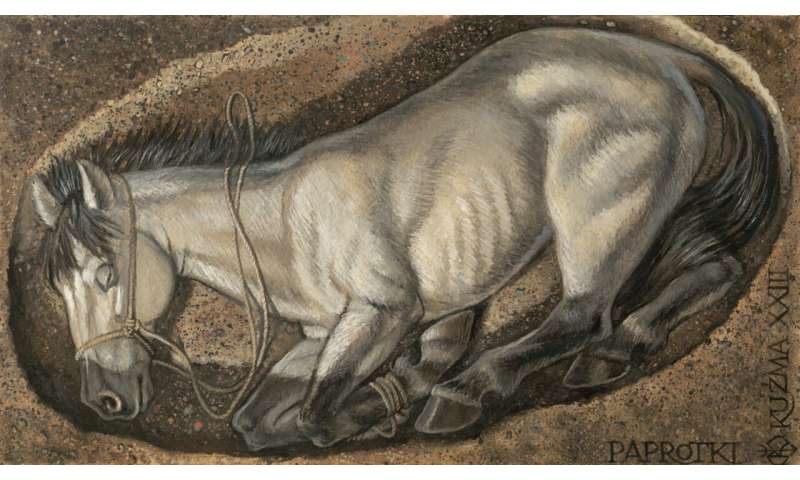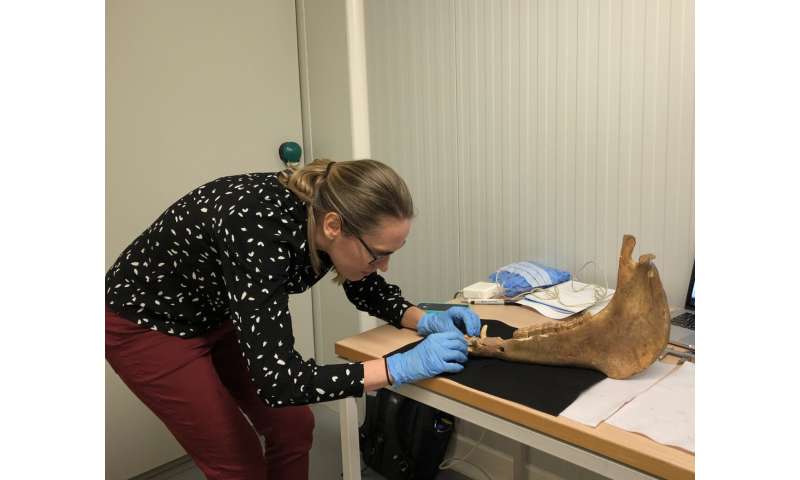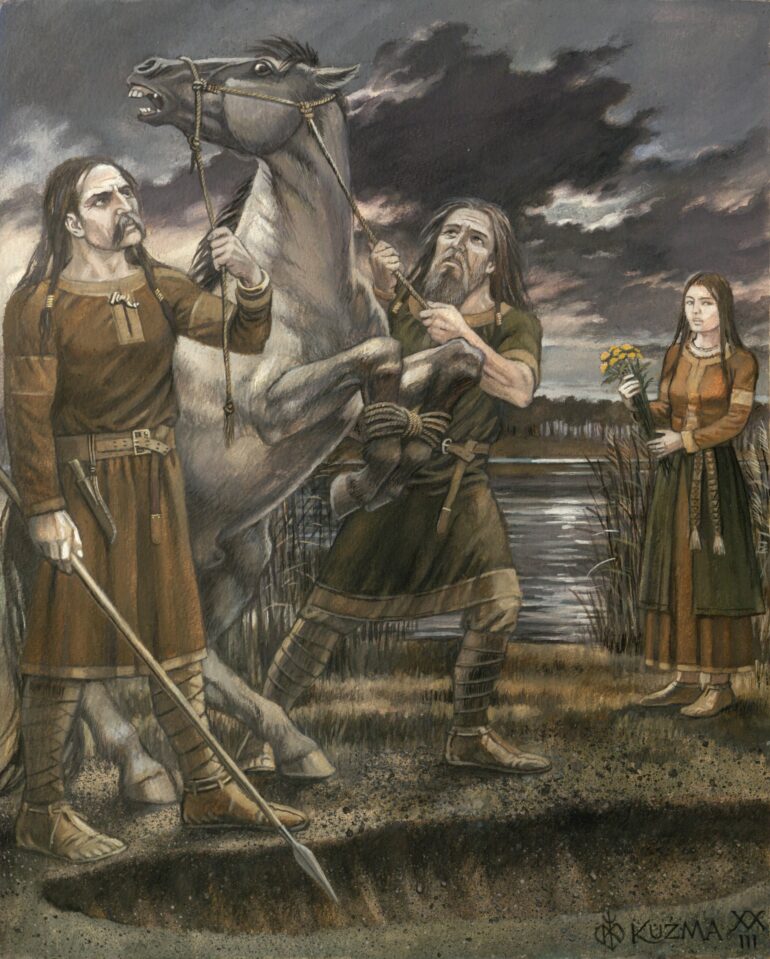Horses crossed the Baltic Sea in ships during the Late Viking Age and were sacrificed for funeral rituals, according to research from Cardiff University.
Published in the journal Science Advances, studies on the remains of horses found at ancient burial sites in Russia and Lithuania show that they were brought overseas from Scandinavia utilizing expansive trade networks connecting the Viking world with the Byzantine and Arab Empires.
Up to now, researchers had believed sacrificial horses were always locally sourced stallions. But these results reveal horses from modern Sweden or Finland traveled up to 1,500 km across the Baltic Sea. The findings also show that the sex of the horse was not necessarily a factor in them being chosen for sacrifice, with genetic analysis showing one in three were mares.
A scientific technique called strontium isotope analysis was used on horse teeth from 74 animals to identify where they had originated. Soil, water and plants have a chemical makeup reflecting their underlying geology. The chemical signature is absorbed by animals on consumption and remains locked in the hard enamel of their teeth, allowing archaeologists to trace their life journeys hundreds of years later.
Horse sacrifices were highly visible and symbolic public rites across pagan prehistoric Europe, persisting the latest among the Baltic tribes, up to the 14th century AD. Offering pits might include multiple horses, single complete horses, or partial animals. In many Baltic cemeteries, horses were buried separately from humans, but there are numerous examples of horses with overlain human cremations.
Lead author Dr. Katherine French, formerly of Cardiff University’s School of History, Archaeology and Religion, now based at Washington State University, said, “This research dismantles previous theories that locally-procured stallions were exclusively selected for sacrifice. Given the unexpected prevalence of mares, we believe the prestige of the animal, coming from afar, was a more important factor in why they were chosen for this rite.
“Viking Age trade routes stretched from modern Iceland, Britain, and Ireland in the West all the way to the Byzantine and Arab Empires in the East. The presence of a trader’s weight in one horse grave points to the key role of horses in these vibrant trade networks.”

Reconstruction of a sacrificial horse deposit at Paprotki Kolonia, modern Poland. © Mirosław Kuzma.

Project lead Dr. Katherine French uses column chromatography to collect strontium isotopes from horse dental enamel samples. © Cardiff University

Dr. Katherine French investigates a horse mandible to select a dental sample at the University of Białystok. © Cardiff University.
Co-author Dr. Richard Madgwick, also based at Cardiff University’s School of History, Archaeology and Religion, said, “Pagan Baltic tribes were clearly sourcing horses overseas from their Christian neighbors while simultaneously resisting converting to their religion. This revised understanding of horse sacrifice highlights the dynamic, complex relationship between Pagan and Christian communities at that time.”
More information:
Katherine French et al, Biomolecular evidence reveals mares and long-distance imported horses sacrificed by the last pagans in temperate Europe, Science Advances (2024). DOI: 10.1126/sciadv.ado3529. www.science.org/doi/10.1126/sciadv.ado3529
Provided by
Cardiff University
Citation:
Horse remains show Pagan-Christian trade networks supplied horses from overseas for the last horse sacrifices in Europe (2024, May 17)



